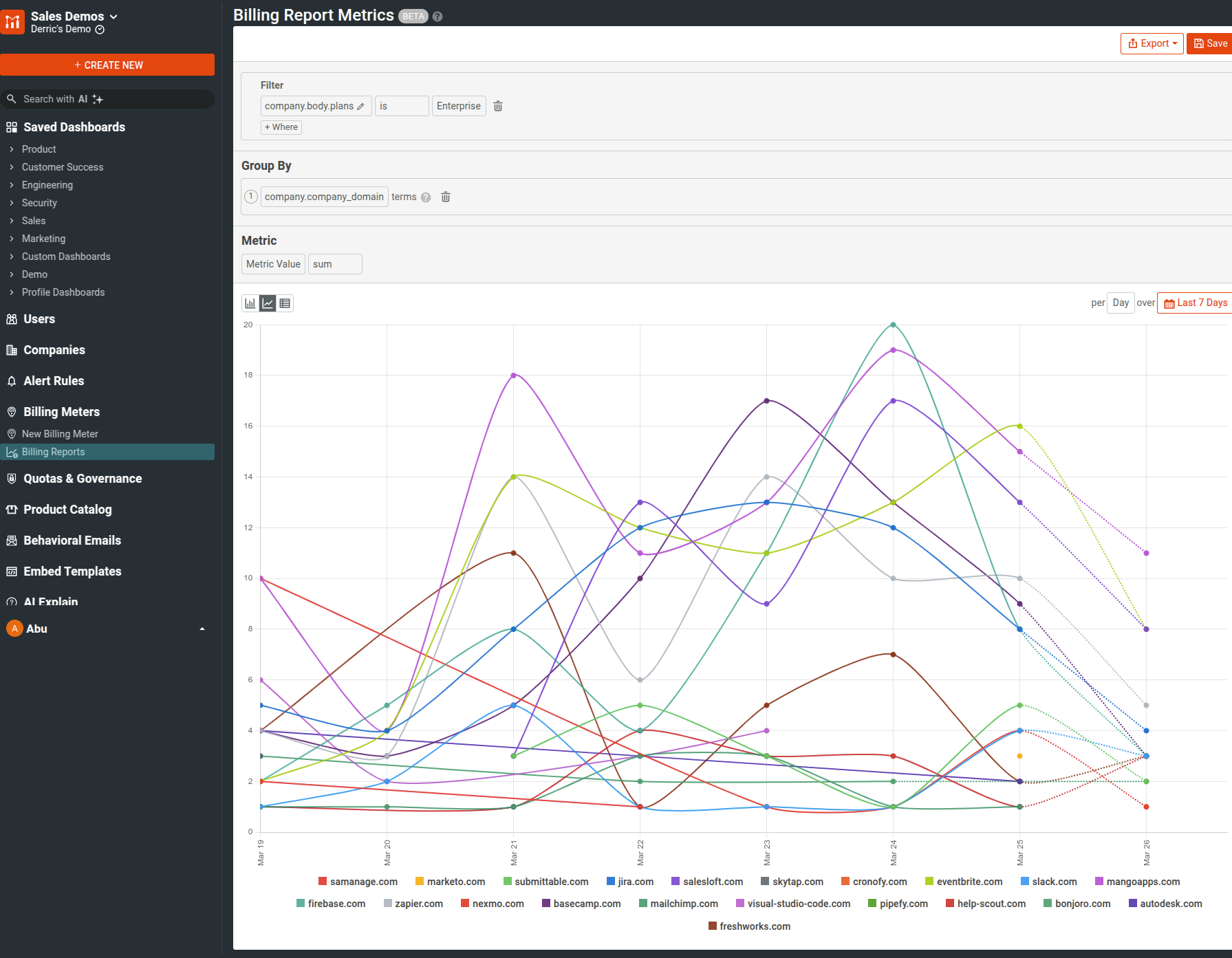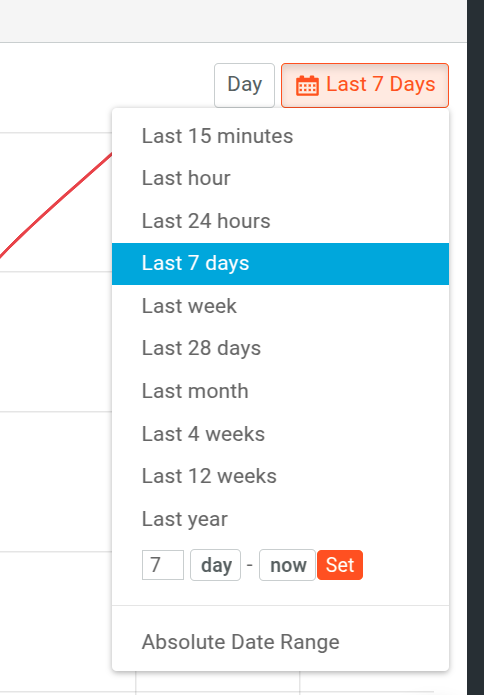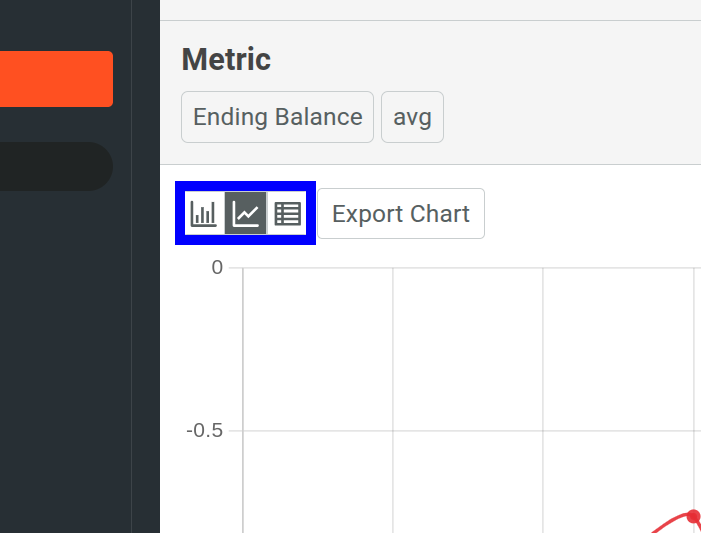Billing Meter Metrics
Billing Report Metrics gives you aggregated metrics on billing reports history within a specific timeframe of your choice.
Overview
Billing Report Metrics gives you a consolidated interface to dig deep into metrics about your existing billing meters and visualize them. It allows you to achieve the following with ease:
- Understand aggregated usage and financial flows.
- Save time and resource by avoiding manual auditing of meters or companies for a specific piece of information.
- Quickly find active meters so you know what meters are reporting data. This allows you to debug faster—for example, reporting issues with specific meters.
Access Billing Report Metrics
To access Billing Report Metrics, follow these steps:
- Go to your Moesif Web Portal.
- Select Billing Meters in the navigation menu.
- Select Billing Report Metrics.

Specify Filters
In the Filter pane ,filter the reported usage or amount by selecting one or more billing meter data fields. The following filters are available:
billing_meter_idsuccessstatuscompany_idtypeplan_idprice_idamountmeter_metricprovidercurrencyreport_total_usagesubscription_idsubscription_item_id
Create Grouped Charts
In the Group By pane, you can select billing meter data fields to create a
chart that displays values across multiple catagories. For example, you can select
provider to break down your metrics across different billing providers like
Stripe, Recurly, and so on.
Specify the Metric to Plot
Select the metric value you want to plot in the chart in the Metric pane. The following metric types are available:
Metric ValueAmountEnding BalanceAvailable BalancePending Activity
You can select from the following aggregators for the metric:
summinmaxavg
Specify Time
You can set the period of time you want the metrics of and the interval in the time control dropdowns.

You can select from one of the builtin time spans, for example,
Last 7 days or Last week. You can also specify the interval for the time
period—for example, daily or hourly. If you want more precise control, use the
relative date range or absolute date range options.
Change Chart Style
You can change how Moesif plots billing report metrics charts and toggle from one style to another. This allows you to view the metrics in multiple ways.
The following styles are available:

Bar Chart
A bar chart represents data with rectangular bars. The height of each bar corresponds to a quantity of the metric data and each bar belongs to a category. The categories come from the grouping you specify and each bar represents a single category.
Line Chart
A line chart plots your metrics by connecting the data points with lines. Each data point represents a value of the metric at a specific time period. Line charts help you visualize and understand how metrics change over time.
Table
The table view shows the metrics data in a tabular format, similar to a spreadsheet.
Export Chart Data
You can export the raw data of your billing report metrics chart in JSON format by selecting Export Chart. The export adheres to any filters and settings that you have applied to your chart. Therefore, make sure you’ve applied the changes you require before exporting.